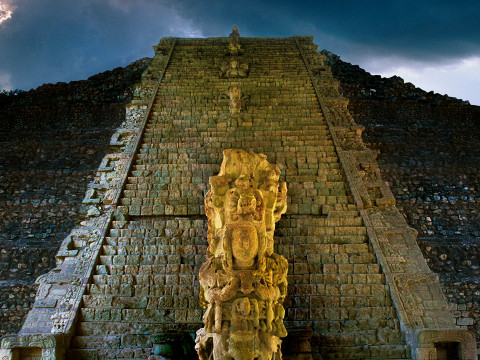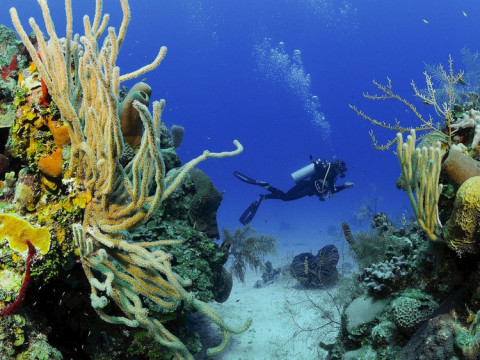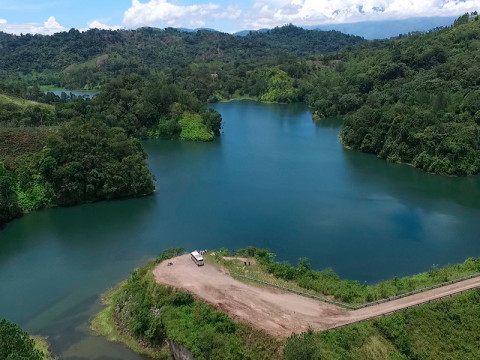Quick Travel Guide for Honduras

Honduras privileged location in the heart of the Americas makes it the ideal spot to observe one of the most diverse tourist scenes of the region. In 2016, a panel of experts declared Honduras as one of the top 16 emerging travel destinations in the world for the New Year, according to CNN. Honduras is the second-largest country in Central America, yet we see that it is one of the least visited countries in the area. This gorgeous land has been slowly beginning to shed its negative violent reputation and becoming a more attractive hotspot for travelers who are looking to get off the beaten path in Central America. Sure, every globetrotter has spent at least a summer in the jungles of Costa Rica or has seen the Mayan Ruins of Guatemala and Mexico, but have you ever experienced something like Honduras?
Let's be honest, we all know Central America can look quite small compared to other places around the world. It only has 7 countries and many people think they all look pretty much the same. First of all, don’t be like other people. Every country is unique in its own culture and history. When it comes to Honduras, you will be able to get to know our biggest asset, our people. Catrachos (Hondurans), as our neighbors call us, are the friendliest, and warmest souls around. Hondurans will take you in with a genuine smile and they will respect you for who you are. Not knowing Spanish is not an excuse for not visiting this tropical land, since Honduras has the largest English-speaking population in Central America, after Belize and Costa Rica.
Honduras at a glance may seem as the media has portrayed as a very dangerous place. There is no denying that its crime rates are nothing but shocking, it has been plagued by years of civil unrest and violence. Over 60% of its population lives below the poverty line, making it hard for personal economic development to rise. Apart from this, we have always seen community collaboration and a need for prosperity. Honduras has also been witnessing a rise in tourism and slowly emerging as it once was one of Latin America's most priceless gem. Therefore, you will see locals being welcoming and taking the safety of foreigners seriously. You will think I am lying, but once you are there you will feel like it’s one of the safest places you have ever been, and that's precisely how every host will want you to feel. As in every country, it is always important to take every safety precaution you can, as a tourist your safety risks will be mitigated by simply visiting the most popular and protected areas the country has to offer.
BEFORE YOU GO
When it comes to health concerns, you should be aware of the many Zika virus reports that have been recorded in Honduras, find a complete Zika Virus guide and be aware of the risks and how to prevent it. Sunscreen and insect repellent should be two of the items you should not forget to put in your travel bag. Avoid drinking tap water and go to the safe filtered or bottled water instead. Be aware that many things will work differently in Honduras such as transportation. You won't find your typical yellow cab with a meter in Honduras and Ubers do not exist either. The maximum price for a taxi will be that of 200 HNL ($8.15) and buses tend to be 50 HNL ($2.03). If you are coming out of the airport it might be a little hard to find taxis who will want to charge cheap, so keep in mind that you might be better off by arranging something beforehand.
One a good note, you will be able to enjoy some of those low prices since Honduras is one of the most inexpensive countries of Central America. When it comes to reading your bill, some foreigners will overlook at the obligatory tip in their bills when they go to restaurants, this is a very common practice in Honduras. Many restaurants will already have an obligatory tip in their bills so make sure you read the bill first to avoid paying more than you are supposed to. It will typically read as "Servicio" if you see that in your tip then you do not need to tip twice. Although Visa’s and Mastercard’s are widely accepted pretty much everywhere it is recommended that you carry cash if you want to avoid paying that 2 % on credit card processing fees. US dollars are also widely accepted in most business and locations around the whole country.
HISTORY SITES
If you would like to check part of the legacy left from the American Banana companies that were established in Honduras around the Twentieth Century you might want to visit Trujillo and take a look at one of their first and oldest steam locomotives that worked at the service of the Standard Fruit Company Railroad. Honduras still possesses both the Standard Fruit Company de Honduras mostly known as Dole and the Tela Railroad Company famously recognized as Chiquita Bananas. As much as bananas are the thriving force of Honduran economy their coffee cannot be left behind. You will find shaded coffee plantations on the western side of Honduran land. Hondurans also export quality pineapples, shrimp, fish, African Palm oil and many other products all over the Americas.
If you are a big fan of history, you will not want to miss Honduras most historical site known as Copan. Mounds of stones, some trees bursting through the soil and a collapsed wall that seems to have been twisted and distorted yet it holds itself strongly and proud. Deliberately, you will be able to notice forms that begin to take different shapes and then you recognize a couple of pyramids. As a kid, growing up in Honduras I would try to pretend like I was discovering new territory wandering through the old Mayan soccer fields. I would spy in between the large structures which would depict the astonishing facade of a warrior emerging from the head of a jaguar - what a playground. This Ancient Mayan Temple In Copan holds an archeological park with a wide collection of carved stelae and astonishing hieroglyphic stairways. If you want to sit on top of a temple and have a feel of the possible lives that these ancient civilizations had a thousand years ago this is the place to visit.
Also, if you want to make a small pit stop after the ruins you might want to stop by the famous Lunar Jaguar Spa and their natural hot springs and famous restorative facial mud baths. If you are looking for more hot springs, you might want to visit Gracias a Dios and also check out the biggest canopy of Central America that also resides right there.
PARKS & LAKES
If you are into some birdwatching and some wild adventures, you might want to check out the different locations in Honduras that could offer this and much more.
One of the closest natural sites to the city is Lake Yojoa, Honduras largest lake. This beautiful green basin is sitting in a 30 square volcanic depression, you can find anything from coffee plantations, pineapple farms, volcanic peaks, and an insanely beautiful cloud forest. This is an easy drive and you can allow yourself to be base yourself and your family while exploring the lake. Another famous river that you might want to check out if you are into extreme sports such as water rafting is Rio Cangrejal in Ceiba, the rapids are the most exciting and challenging feature of this river. Lastly, if you get the chance to stop by Tela you might want to hike along the beach or take a trip to the Garifuna communities, such as La Ensenada, San Juan de Miami, you will be able to explore Honduras indigenous culture by listening to punta music and tasting of the best seafood of the Caribbean. Alongside Tela, you can also tour Punta Sal, a national and biological reserve where you can easily spot an abundance of colorful macaws, toucans, parrots, and quetzals, these are just some of the representative birds of the Mayan and Aztec civilizations as well.
BEACHES
As one of the world’s top 10 diving destinations, Honduras is proud to be the home of the beautiful Bay Islands. The most enthusiastic scuba divers have been heading out to Honduras pristine waters and extensive coral reef barrier since the beginning of times. Roatan is the largest of the islands and probably the most developed one as well. Utila is known for being the cheapest place to learn to dive in the Americas, you will get a more rustic sense from this place with its small cabins and laid-back people. Utila is the home to the Afro- Caribbean Garifuna people, which come to be descants of English, Dutch, and French pirates as well as slaves. Back in the 17th century, these islands were famous from being the temporal home of the British buccaneer Captain Morgan and long-time lost treasure chests he left behind. Now, these islands are the of dozens of scuba schools that line the coastal streets. Whenever people are not submerging in the crystal-clear waters of the Bay Islands, they spend their day eating the freshest seafood, sipping some rum cocktails in their hammocks by the small white sandy beaches or just riding bikes up in Pumpkin Hill or West Bay.

